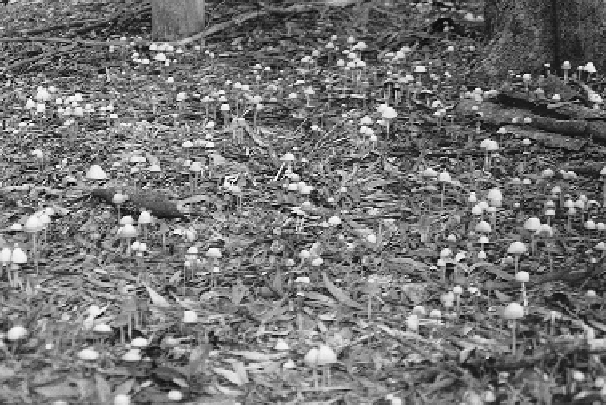Agriculture Reference
In-Depth Information
Figure 5.3
Mushroom fungi growing in a litter layer. (White, 2006; reprinted with
permission of Wiley-Blackwell Publishing Ltd.)
of living organisms. Adsorption on soil mineral or organic matter shields these
enzymes from denaturation and degradation. A common and stable soil enzyme
is urease, which catalyzes the breakdown of urea in fertilizers and animal wastes.
The versatility of soil microorganisms has encouraged attempts to culture
specific groups for use as biofertilizers and biostimulants. Various organic prod-
ucts derived from the metabolism of SOM by microorganisms are also promoted
as stimulants for plant growth. Box 5.1 discusses some of these products.
Functions of the Reducers
Earthworms
Because of their size and physical activity, earthworms are more important than all
the other soil invertebrates in the turnover of SOM in vineyards. As earthworms
feed on dead organic matter they ingest large quantities of clay and silt-size par-
ticles and bacteria. Consequently, soil organic and mineral matter becomes more
uniformly mixed and deposited in the worm feces, called casts. Sticky mucilage
strengthens the casts, making them stable aggregates when dry that improve soil
structure overall.
A few earthworm species live mainly in the surface soil and litter layer, pro-
vided temperature and moisture conditions are favorable. Figure 5.4 shows an
example of one such species. Others burrow more deeply and deposit their casts in
horizontal burrows. Still others feed on surface litter and draw it deep into the soil,
to be deposited in casts in vertical burrows.

